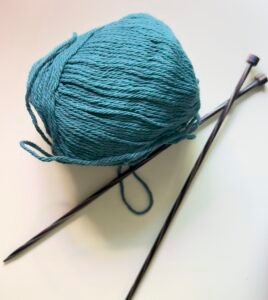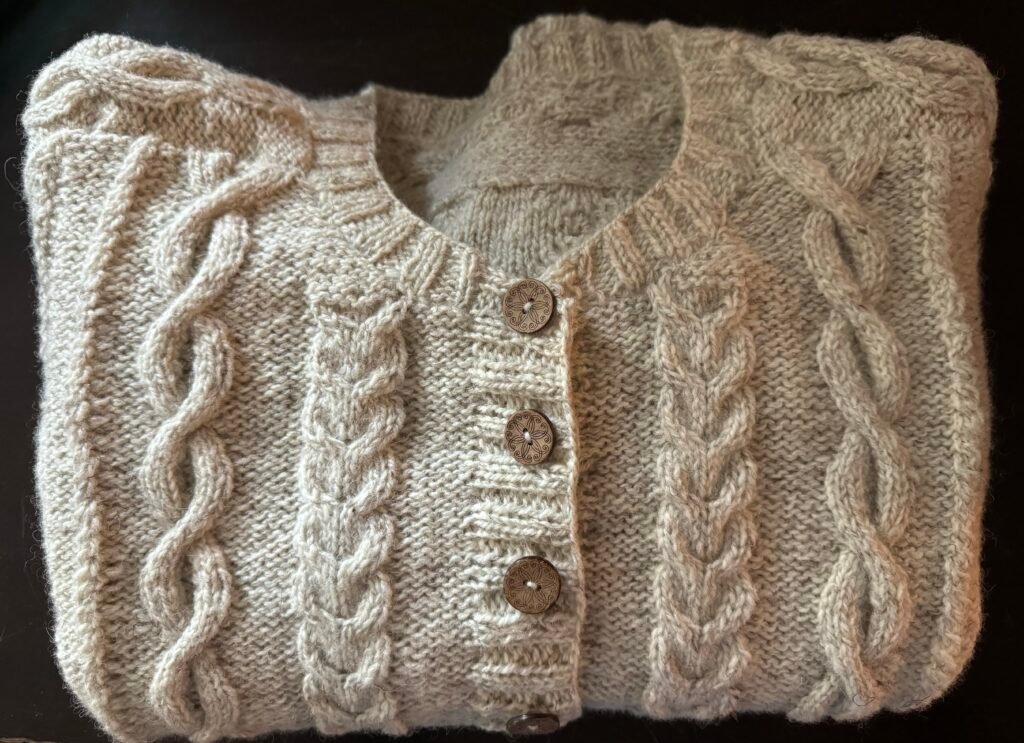Where do you begin when you are ready to start the journey as a new knitter? What tools are essential? Which yarn should you choose?
These are all questions that I had when I first started. The information is out there, but sometimes it can be overwhelming to figure out where to start. Below is a list of some of the most common questions:
- Knitting technique (English vs. Continental)
- Types of knitting needles
- Basic Skills to learn first
English or Continental Knitting?
One of the first questions to answer is what style of knitting should you learn – English or Continental?
Oftentimes continental style knitting is considered faster. That may be the case for many who prefer it, but I have never been able to master it. My hands simply do not want to hold the yarn in my left hand and I find it impossible to maintain tension on the yarn. This leads to cramps in my hands and a lot of frustration. Why put myself through that? I tend to knit for hours on end and doing so while feeling uncomfortable completely negates the relaxing part of knitting for me. So English style it is!
Types of Knitting Needles
 Straight needles
Straight needles- Double-pointed needles (DPNs)
- Circular needles
When considering your first set of needles, the traditional straight needle is what you may think of first. Other types of needles include circular needles and double-pointed needles (DPNs). As a beginner, I started out with straight needles while I was knitting simple squares, or washcloths. DPNs are often used for knitting in the round, especially for a small circumference. Circular needles with short cables can be used for small circumferences, but only up to a point. You can actually still knit very small circumferences with circular needles, but only if you also learn a technique called “magic circle,” which involves using a much longer cable.
While I started out with straight needles, once I became a more advanced knitter, I rarely pick up a straight needle for any project, even a small one. Why? Because knitting with circular needles are incredible versatile. I find DPNs to be unpleasant to use, in my opinion, so I tend to avoid them whenever possible.
Your First Knitting Project
It may be tempting to dive right in and knit your first project such as a scarf, hat or even a sweater. However, I would suggest trying out the two main techniques on an extremely simple project such as a square washcloth. Check out the tutorial for this free washcloth pattern where I demonstrate step-by-step how to cast on, knit, purl, read the pattern, and finish it up by casting off. For this project all you would need is a small ball of worsted weight cotton yarn (might as well make it a functional washcloth that is absorbent, so cotton is a good choice) and a set of knitting needles – 4.5-5mm. They can be straight needles or circular needles. As I mentioned earlier, I use circular needles for almost every project but it can be intimidating to start out using circular needles. On the other hand, if you buy a very basic pair of straight needles for your first couple of projects it can be pretty cost effective. I don’t recommend going out and buying a whole bunch of needles – regardless of type – until you know what you like.

The basic skill you should learn first are how to cast on (typically start with the long-tail cast on), knit stitch, purl stitch, and how to cast off (aka bind off). Check out the Tutorials page for more techniques with step-by-step instructions and short video demonstrations. Reading knitting patterns is a skill all in itself. It is like learning a new language, but it will certainly not take long for you to become fluent once you learn the most common abbreviations and techniques.
By starting with the wash cloth project you will learn how to read a basic knitting pattern. Once you know the basics it gets easier and easier to read more complicated patterns.
Where can you find more patterns, especially free ones?
A website called Ravelry is a great place to start! The site is free to use once you set up an account and you can save patterns in your favorites and purchase patterns to keep in your library. There are plenty of free patterns available, but beware that some free patterns may not be written as clearly as paid patterns or may have more mistakes.
On the other hand, well written, more complex patterns typically are paid patterns. It does take quite a bit of experience and expertise to write a good pattern, especially for garments. By paying for the pattern you are paying for the time and skill that went into making it.
Ravelry also has a great “Projects” feature for each individual pattern. Fellow knitters who have worked on a pattern share their notes and photos which can include valuable insights into how the piece is constructed as well as their opinions on the pattern itself. Check out this collection of easy projects for a beginner knitter that can be found on Ravelry.
Never Stop Learning
Starting a new hobby can be daunting when there is so much to learn. Thankfully, there are a lot more resources out there now then there used to be. I am old enough that when I was starting out, bookstores and libraries were my only places to go – besides asking another knitter in person of course. Today we have so many resources to choose from that it tends to present the opposite problem – information overload!
I started this website to share with you some of the basics to help you check started on your own knitting journey. The goal is to avoid overwhelming you but rather to get right to the point and share the essentials you need to know. I hope it helps you as I build it it with more and more resources. Check out the washcloth step-by-step tutorial so that you can get started with confidence.

